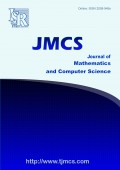

P. Rafiee - Computer Engineering, Network Expert of Keshavarzi Bank, Tehran, Iran G. Latif Shabgahi - Control Dept., Faculty of Electrical Engineering, Power and Water University of Technology, Tehran, Iran
Keeping wide area networks in a reliable mode, and evaluating their reliability is an essential task for network managers. Redundancy in components and communication links in networks is used to provide reliability. In this paper fault tree model is used to evaluate the reliability of an operational network. This analysis is a hierarchical and logical model of undesirable events of the system that is based on all possible combinations of its basic and intermediate events. Since there is often uncertainty in the estimation of failure probability of system components and communication links have been considered as a fuzzy system, and we have evaluated the system fault tree based on indefinite SNMP protocol by means of the fuzzy logic. We have described our methodology by means of a small case study and presented our results.
P. Rafiee, G. Latif Shabgahi, Evaluating the Reliability of Communication Networks (WAN) Using Their Fuzzy Fault Tree Analysis - A Case Study, Journal of Mathematics and Computer Science, 2 (2011), no. 2, 262--270
Rafiee P., Latif Shabgahi G., Evaluating the Reliability of Communication Networks (WAN) Using Their Fuzzy Fault Tree Analysis - A Case Study. J Math Comput SCI-JM. (2011); 2(2):262--270
Rafiee, P., Latif Shabgahi, G.. "Evaluating the Reliability of Communication Networks (WAN) Using Their Fuzzy Fault Tree Analysis - A Case Study." Journal of Mathematics and Computer Science, 2, no. 2 (2011): 262--270